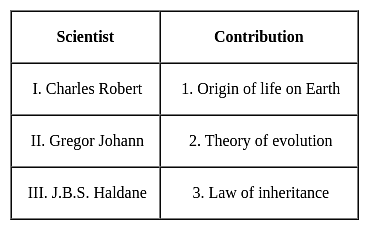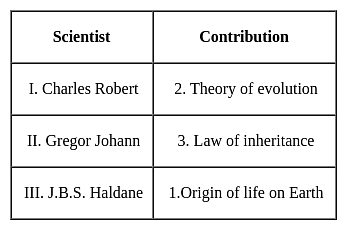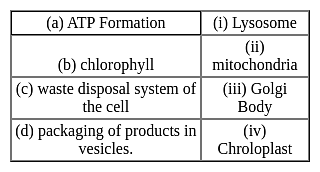Software Development Exam > Software Development Tests > Test: General Science (Molecular Biology) - Software Development MCQ
Test: General Science (Molecular Biology) - Software Development MCQ
Test Description
10 Questions MCQ Test - Test: General Science (Molecular Biology)
Test: General Science (Molecular Biology) for Software Development 2025 is part of Software Development preparation. The Test: General Science (Molecular Biology) questions and answers have been prepared
according to the Software Development exam syllabus.The Test: General Science (Molecular Biology) MCQs are made for Software Development 2025 Exam.
Find important definitions, questions, notes, meanings, examples, exercises, MCQs and online tests for Test: General Science (Molecular Biology) below.
Solutions of Test: General Science (Molecular Biology) questions in English are available as part of our course for Software Development & Test: General Science (Molecular Biology) solutions in
Hindi for Software Development course.
Download more important topics, notes, lectures and mock test series for Software Development Exam by signing up for free. Attempt Test: General Science (Molecular Biology) | 10 questions in 12 minutes | Mock test for Software Development preparation | Free important questions MCQ to study for Software Development Exam | Download free PDF with solutions
Test: General Science (Molecular Biology) - Question 1
Alexander Fleming is known for discovering ________.
Detailed Solution for Test: General Science (Molecular Biology) - Question 1
Detailed Solution for Test: General Science (Molecular Biology) - Question 2
Test: General Science (Molecular Biology) - Question 3
Which of the following statements about cells is true?
Detailed Solution for Test: General Science (Molecular Biology) - Question 3
Detailed Solution for Test: General Science (Molecular Biology) - Question 4
Test: General Science (Molecular Biology) - Question 5
How does Archaebacteria differ from the other Bacteria
Detailed Solution for Test: General Science (Molecular Biology) - Question 5
Detailed Solution for Test: General Science (Molecular Biology) - Question 6
Detailed Solution for Test: General Science (Molecular Biology) - Question 7
Detailed Solution for Test: General Science (Molecular Biology) - Question 8
Test: General Science (Molecular Biology) - Question 9
From the point of view of evolution of living organisms, which one of the following is the correct sequence of evolution ?
Detailed Solution for Test: General Science (Molecular Biology) - Question 9
Test: General Science (Molecular Biology) - Question 10
Who is popularly known as the father of Evolutionary Biology?
Detailed Solution for Test: General Science (Molecular Biology) - Question 10
Information about Test: General Science (Molecular Biology) Page
In this test you can find the Exam questions for Test: General Science (Molecular Biology) solved & explained in the simplest way possible.
Besides giving Questions and answers for Test: General Science (Molecular Biology), EduRev gives you an ample number of Online tests for practice
Download as PDF





















